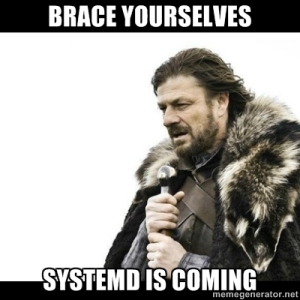The following month are expected to be really exciting (and scary, eheh), for many reasons. Explanation below.
My life is going to rapidly change in roughly one month, and when these things happen in your life, you feel scared and excited at the same time. I always tried to cope with these events by just being myself, an error-prone human being (My tech. English teacher doesn’t like me to use “human being”, but where’s the poetry then!) that always tries to enjoy life and computer science with a big smile on his face.
So, let’s start in reverse order. I have the opportunity to do the university internship at Google starting from October, more precisely at Google Ireland, which is located in Dublin. I think many of the Googlers had the same feelings I currently have before me, scared and excited at the same time, with questions like “do I deserve this?”, “am I good enough?”. As I wrote above, the only answer I have found so far is that, well, it will be challenging but, do I like boredom after all? Leveraging on professionality and humbleness is probably what makes you a good team-mate all the time. Individuals cannot scale up infinitely, that is why scaling out (as in team work) is a much better approach.
It’s been two years since I started working at Weswit, the company behind the award-winning Lightstreamer Push technology, and next month is going to be my last one there. Even though, you never know what will happen next year, once back from the internship at Google. Sure thing is, I will need a job again, and I will eventually graduate (yay!).
So yeah, during the whole University period, I kept working and besides it’s been tough, it really helped me out bidirectionally. In the end, I kept accumulating real-world expertise during this time.
Anything in my life has been risk-free, and I took the risk of leaving a great job position to pursue something I would have regretted for the rest of my life, I’m sure. On the other hand, I’m sure that at the end of the day, it will be a win-win situation. Weswit is a great company, with great people (that I want to thank for the trust they gave me) and I’m almost sure that the next one might not be my last month there (in absolute terms I mean). You never know what is going to happen in your life, and I believe there’s always a balance between bad and good things. Patience, passion and dedication is the best approach to life, by the way.
Before leaving for Dublin, we (as in the Sabayon team) are planning to release Sabayon 10. improved ZFS support, improved Entropy & Rigo experience (all the features users asked me about have been implemented!), out of the box KMS improvements, BFQ iosched as default scheduler (I am a big fan of Paolo Valente’s work) a load of new updates (from the Linux kernel to X.Org, from GNOME to KDE through MATE) and if we have time, more Gentoo-hardened features.
Let me mention here one really nice Entropy feature I implemented last month: Entropy adopted SQLite3 as its repository model engine since day one (and it’s been a big win!), even though, the actual implementation has been always abstracted away so that upper layers never had to deal with it directly (and up to here, there is nothing exciting). Given that a file-based database, like SQLite is, is almost impossible to scale out [1], and given that I’ve been digging into MySQL for some time now, I decided it was time to write an entropy.db connector/adapter for MySQL, specifically designed for the InnoDB storage engine. And 1000 LOC just did it [2]!
As you may have seen if you’re using Sabayon and updating it daily, Entropy version has been bumped from 1.0_rcXXX to just XXX. As of today though, the latest Entropy version is 134. It might sound odd or even funny, but I was sick of seeing that 1.0_rc prefix that was just starting to look ridiculous. Entropy is just about continuous development and improvement, when I fully realized this, it was clear that there won’t be any “final”, “one-point-oh” and “one-size-fits-all done && done” version, ever. Version numbers have been always overrated, so f**k formally defined version numbers, welcome monotonically increasing sequences (users won’t care anyway, they just want the latest and greatest).
I know, I mention “Equo rewrite” in the blog post title. And here we go. The Equo codebase was one of the first and long living part of Entropy I wrote, some of the code is there since 2007, even though it went through several refinement processes, the core structure is still the same (crap). Let me roll back the clock a little bit first, when the Eit codebase [3] replaced old equo-community, reagent and activator tools, it was clear that I was going to do exactly the same thing with the Equo one, thus I wrote the whole code in an extremely modular way, to the point that extra features (or “commands” in this case) could be plugged in by 3rd parties without touching the Eit kernel at all. After almost one year, Eit has proven to be really powerful and solid to the extent that now, its architecture is landing into the much more visible next-gen Equo app.
I tell you, the process of migrating the Equo codebase over will be long. It is actually one of many background tasks I usually work on during rainy weekends. But still, expect me to experiment with new (crazy, arguable, you name it) ideas while I make progress on this task. The new Equo is codenamed “Solo”, but it’s just a way to avoid file names clashing while I port the code over. You can find the first commits on the entropy.git repo, under the “solo” branch [4].
Make sure to not miss the whole picture: we’re a team and Sabayon lives on incremental improvements (continous development, agile!). This has the big advantage that we can implement and deploy features without temporal constraints. And in the end, it’s just our (beloved) hobby!
[1] imagine a web service cluster, etc — I know, SQL in general is known for not scaling out well without sharding or other techniques, but this is outside the scope of this paragraph, and I think NoSQL is sometimes overrated as well.
[2] http://git.sabayon.org/entropy.git/tree/lib/entropy/db/mysql.py
[3] Eit is the server-side (and community-repo side) command line tool, “Eit” stands for “Entropy Infrastructure Toolkit” and it exposes repo management in a git-like fashion.
[4] http://git.sabayon.org/entropy.git/log/?h=solo

